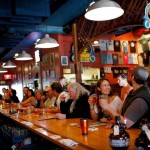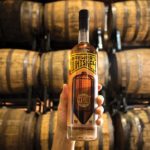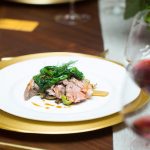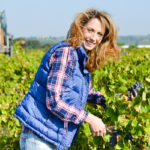The Ancient Craft and Tradition of Artisan Charcuterie is Being Reborn
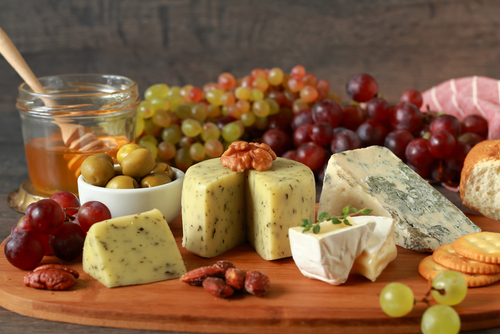
A craving for artisan charcuterie is resurging in restaurants across the country. As master charcutier and salumiere, Francois Vecchio states in his book, Charcuterie, Salumiere and Wurstmeister, “It is a time to return to a direct connection with the ancient craft and tradition of charcuterie, salumi and wurst.” Last spring, Sara Grady, vice president of programs at Glynwood in Cold Spring, New York, saw the potential explosion of the charcuterie industry in the Hudson Valley, a veritable hotbed of top-quality, natural food products. Grady organized a “master class” with Francois Vecchio at Glynwood bringing together the leading producers of sausage and charcuterie in the Hudson Valley. Glynwood is a nonprofit agricultural organization that ensures farming thrives in the Hudson Valley by developing and implementing core programs. Grady saw an opportunity in this region to support farming by fostering distinctive, high-value products that emerge from the type of agriculture that fits the Hudson Valley. It is a pasture region well-suited to humane and sustainable livestock farming – leading to products that fully utilize all parts of the animal while contributing to a vibrant food culture.
Charcuterie is rapidly developing everywhere – and producers are seeking skill and knowledge of these traditions, even as they innovate their own approach. Glynwood brought this invite-only group of regional producers together to initiate a collaboration amongst them with a longer term goal of supporting high-quality meat products by answering the needs and opportunities they face.
In Vecchio’s book, co-authored with Elizabeth Pepin Silva, the authors ask for a re-evaluation of the industry’s core values—namely, they advocate a return to quality over quantity. They also look at how traditional approaches not only make for a better tasting sausage but are also more environmentally sound. The book heralds a new wave of chefs and butchers who have a respect for sustainability, humane husbandry, organic growth, and ecology.
Paul Wetzel, Charcutier and Sous Chef at Gramercy Tavern, assisted Vecchio at Glynwood’s program on charcuterie as he had previously attended a similar seminar with Vecchio in Alaska. Paul has been a full-time charcutier for seven years taking over the position at Gramercy Tavern from Scott Bridi who now owns Brooklyn Cured. Wetzel says the interest in charcuterie has been building in the U.S. for the past seven/eight years with American chefs trying to return to the traditional methods of European charcuterie – the curing of meats as seen in Germany, France, Italy and Spain. It also has to do with chefs wanting to use locally-sourced products from nearby farms. It’s relevant to the whole farm-to-table locavore movement that has been gaining momentum over the last several years. Consumers want to know where their food comes from and that the quality of their food is the very best. Chefs, wanting to use the entire animal from nose-to-tail, have to come up with creative ways to utilize the whole animal. They can cure the meat, confit it, make terrines, pâtés, and sausages, and use the bones and entrails for stocks.
Wetzel’s thoughts are reiterated by Jeff Gimmel, Chef/Owner of Swoon Kitchenbar in Hudson, New York. He started the art of charcuterie in the traditional European way when he opened Swoon in 2004. He feels the resurgence of charcuterie is part of the trend towards more rustic foods using all natural resources and prepared in the tradition of our grandparents and forefathers. Gimmel says even the new restaurants are stripped down to basic good food that is better tasting and with no waste. He says this movement is really a primal one with chefs.
Both he and Paul Wetzel at Gramercy Tavern purchase their whole pigs from the Raven & Boar in East Chatham, New York as does Daniel Boulud at Bar BouludBar Boulud and Dan Barber at Blue Hill; these pigs have great fat content and are so rich in flavor. As Gimmel says, “The flesh’s fat is great for curing and the cuts are luscious with a real clean pig flavor.”
Ruby Duke, co-owner of Raven & Boar with her husband Sather, says their prized whey-fed hogs are a mix of heritage breeds from a local breeder and are selected for their desirable traits and hybrid vigor. In her studying of animal husbandry, Ruby learned that in Northern Italy, the pigs are traditionally fed whey from Parmesan cheese. The cured legs are transformed into the region’s famous prosciutto di Parma.
Each small herd of heritage pigs roam free on the Sathers’ pastures and forestland. The pigs are fed whey mostly obtained from Coach Farms. It is known amongst farmers and chefs that the pork from whey-fed pigs has a unique flavor and texture, is naturally more marbled, and is especially excellent for charcuterie. Raven & Boar’s pigs are healthy and happy because they roam free to forage and are fed a diverse diet of whey-soaked grains, orchard grass, vegetables, fruits and naturally foraged roots and acorns. Another huge asset attesting to the fine quality of flavor and texture with the Sathers’ pigs is the slaughtering process. Raven & Boar is only 15 minutes from Hilltown Pork, a USDA-certified processing facility, so the pigs are humanely processed immediately without fear and stress, and can be delivered to a restaurant the next day.
So, when enjoying your next plate of charcuterie with some artisan cheeses paired with an excellent wine, know that the cured meats have come from happy pigs.


